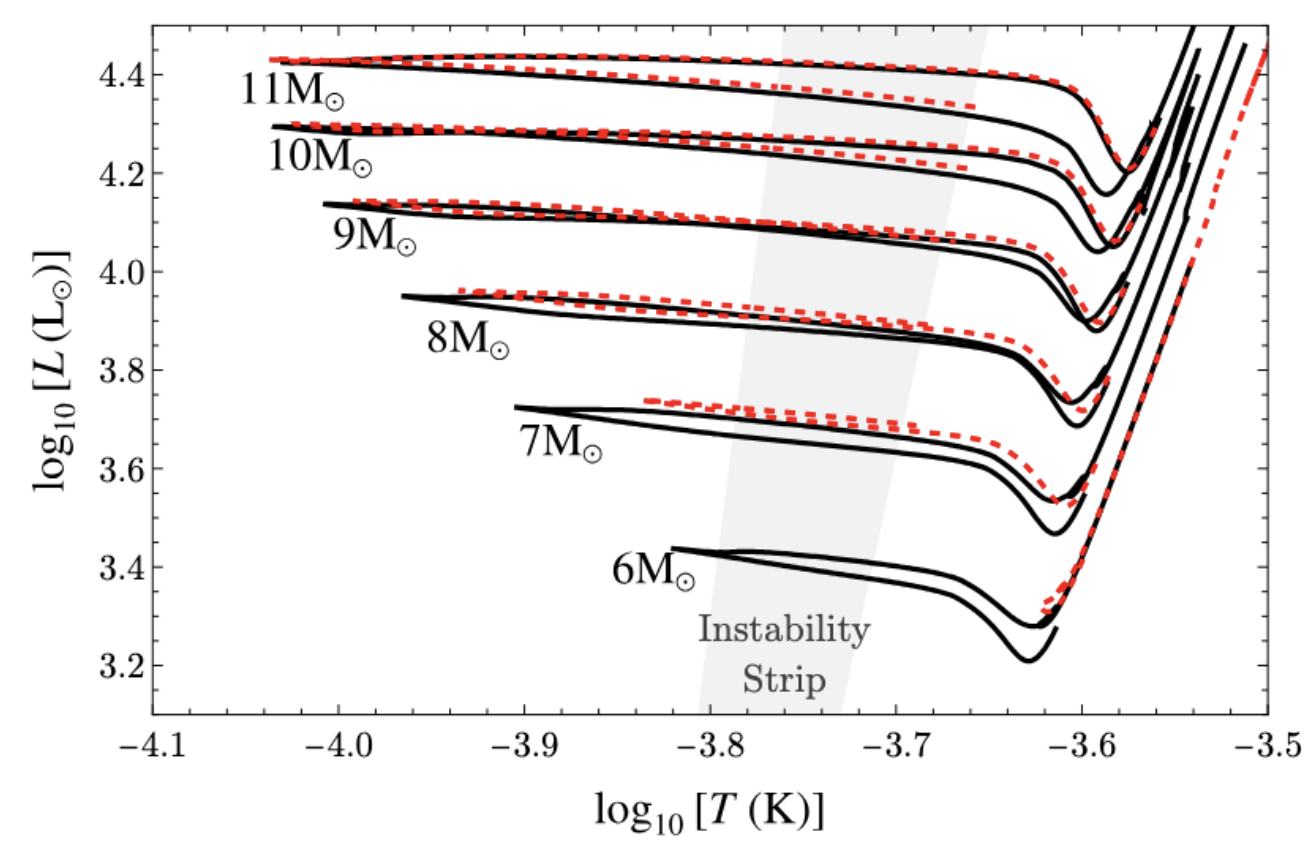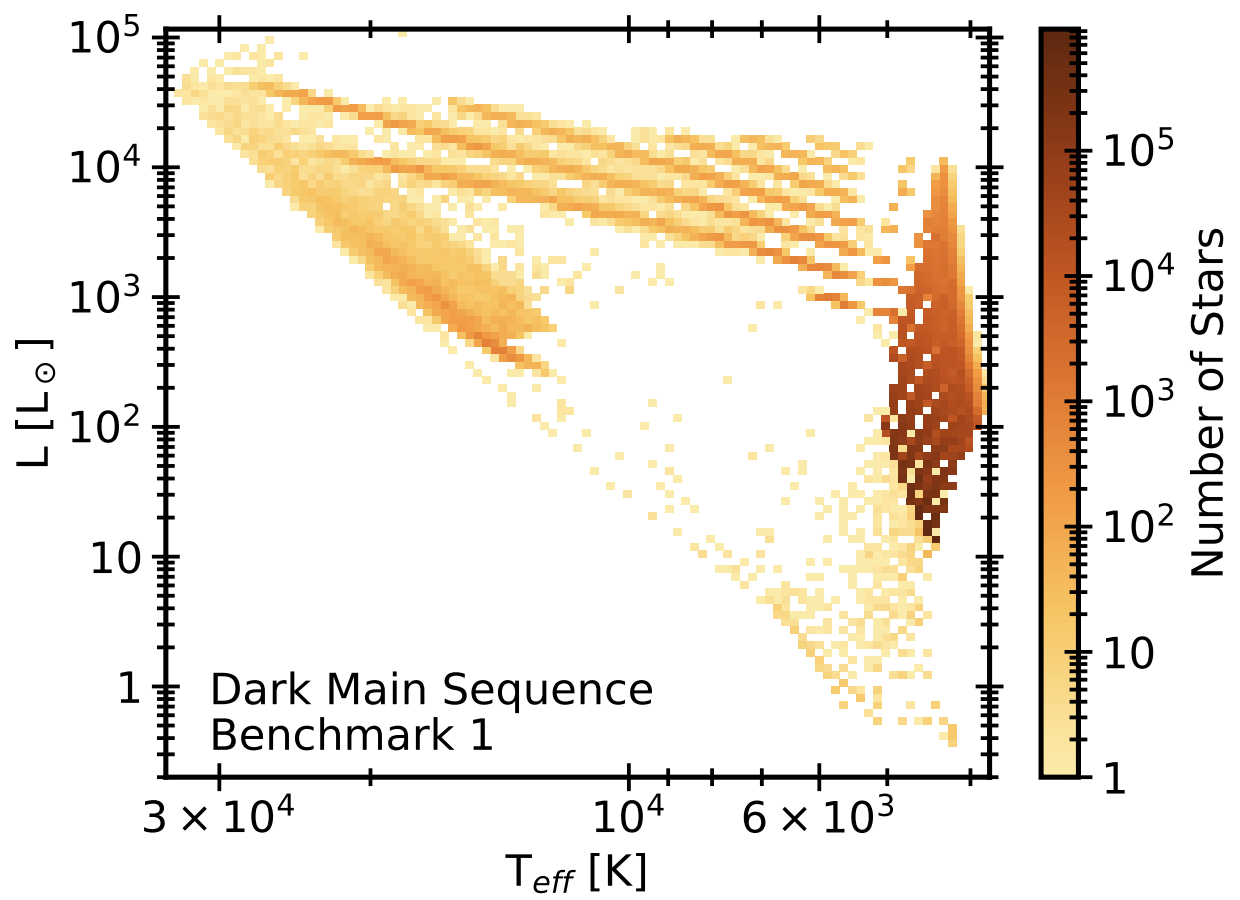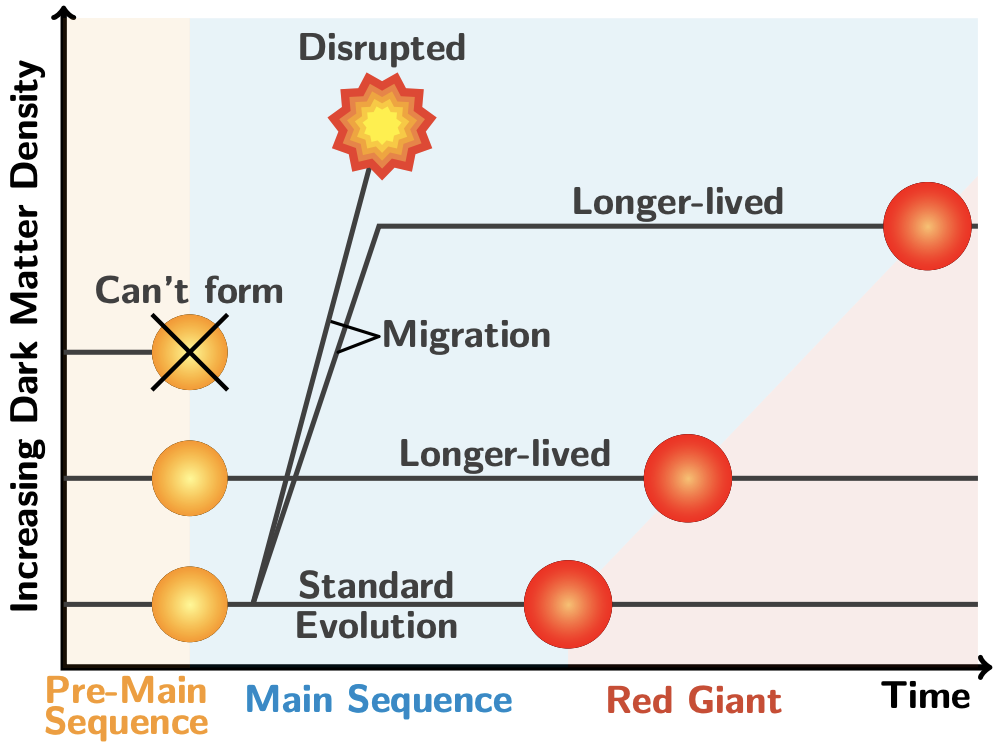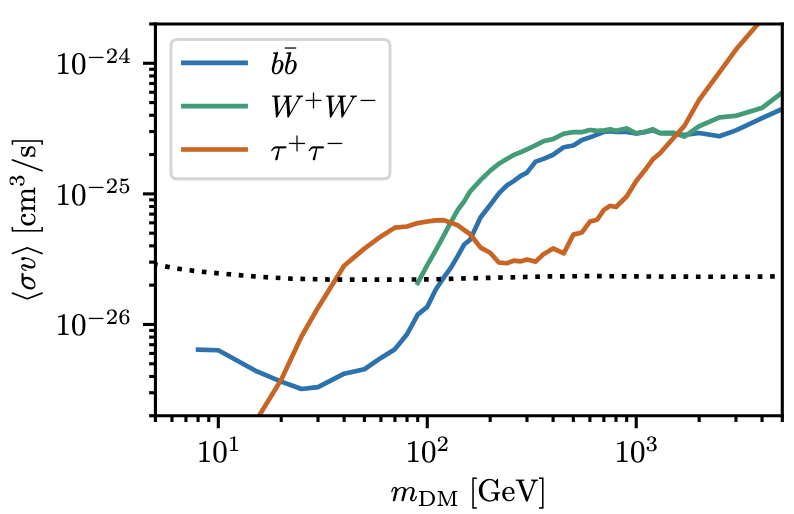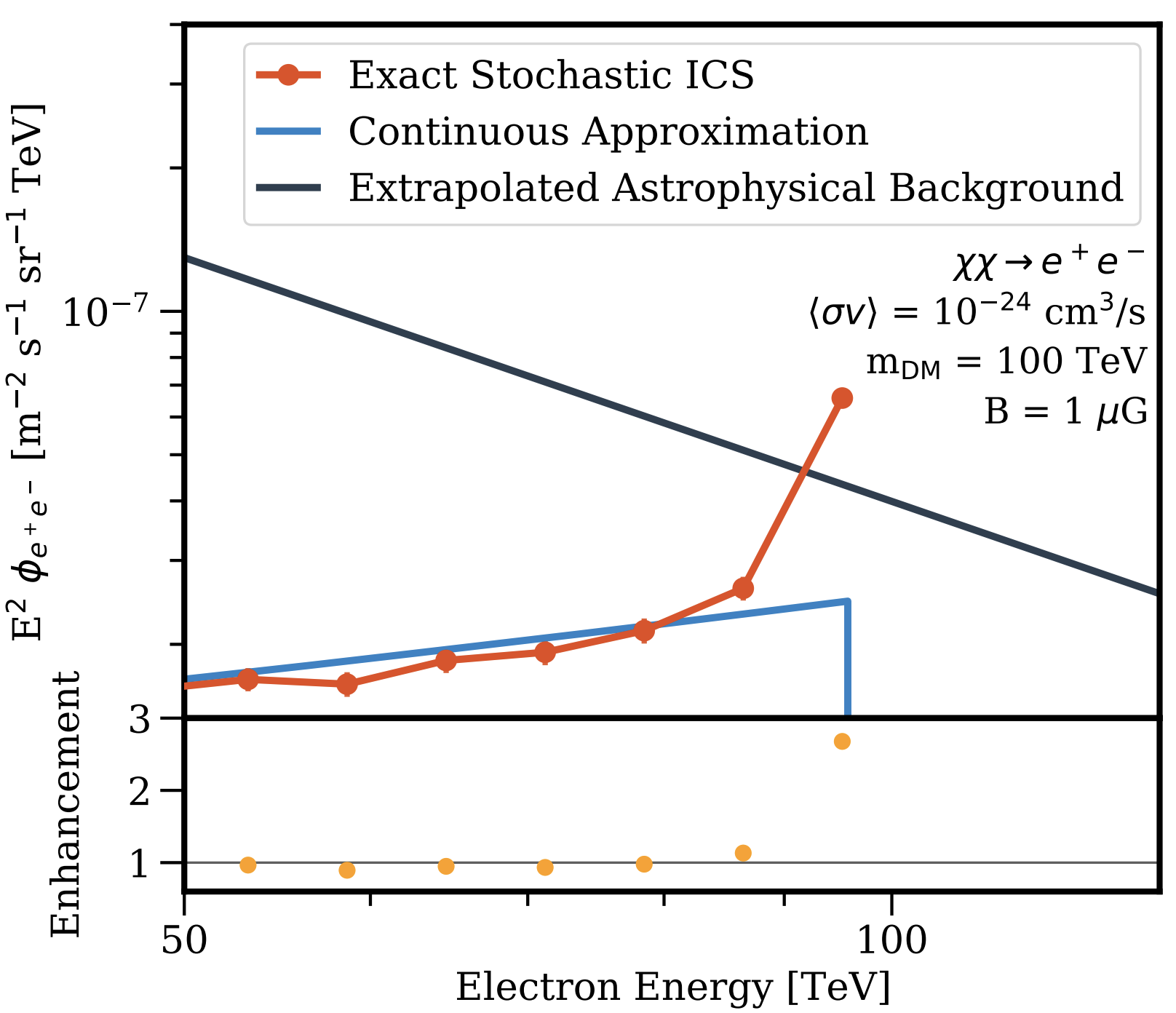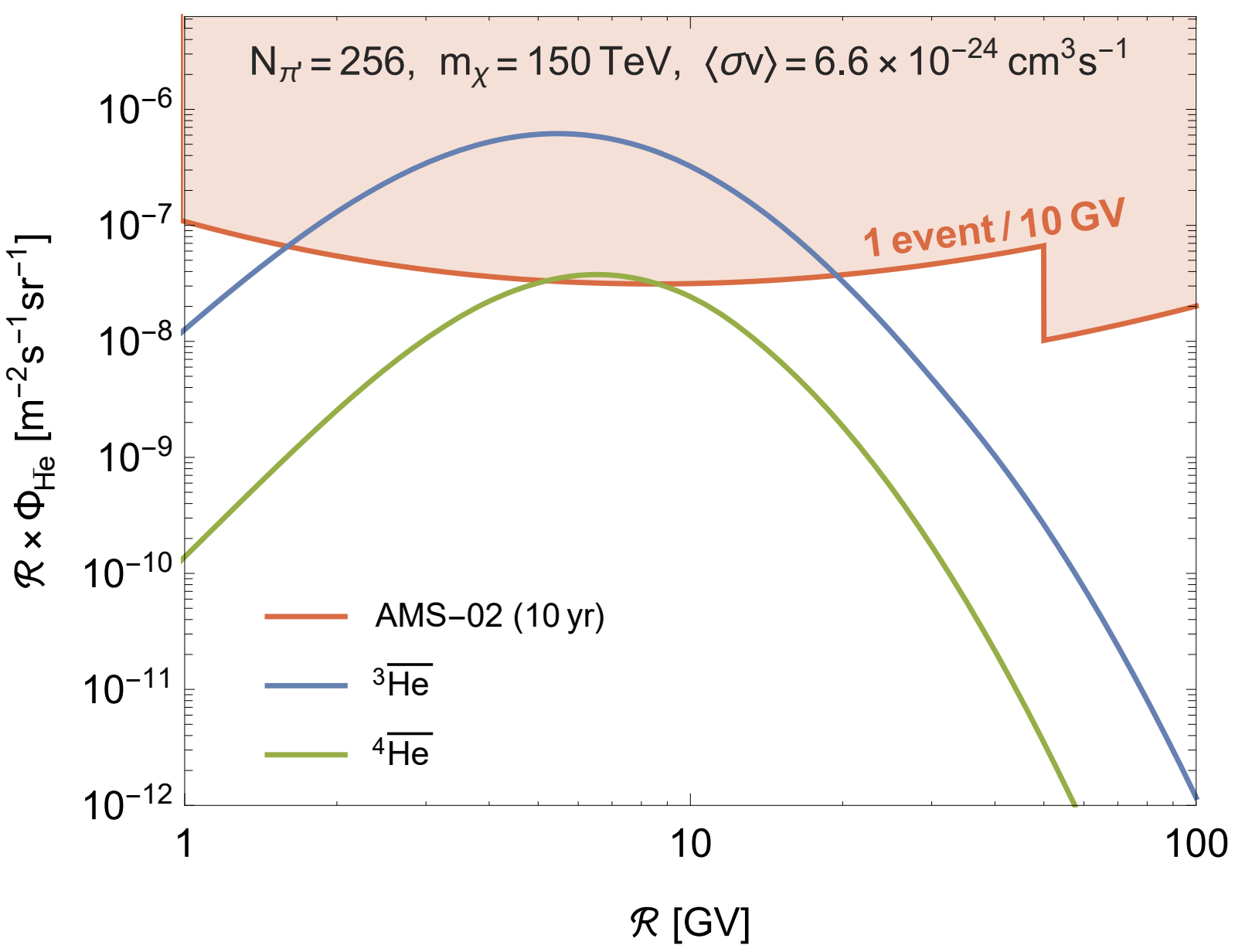21. Missing Beats: Dark Matter Silences Short-Period Cepheids in the Galactic Center
Djuna Croon, Tim Linden, Jeremy Sakstein
To Be Submitted
20. Dark Branches of Immortal Stars at the Galactic Center
Isabelle John, Rebecca Leane, Tim Linden
Physical Review D. 112 (2025) 2, 023028
19. Dark Matter Scattering Constraints from Observations of Stars Surrounding Sgr A*
Isabelle John, Rebecca Leane, Tim Linden
Physical Review D 109 12 123041 (2024)
18. Gamma-ray lines in 15 years of Fermi-LAT data: New constraints on Higgs portal dark matter
Pedro De la Torre Luque, Tim Linden, Juri Smirnov
Physical Review D 109 (2024) 4, L041301
17. Limits on dark matter annihilation in prompt cusps from the isotropic gamma-ray background
M. Sten Delos, Michael Korsmeier, Axel Widmark, Carlos Blanco, Tim Linden, Simon White
Physical Review D 109 8 083512 (2024)
16. Accurate Inverse-Compton Models Strongly Enhance Leptophilic Dark Matter Signals
Isabelle John, Tim Linden
Physical Review D 108 10 103022
15. Cosmic Ray Antihelium from a Strongly Coupled Dark Sector
Martin Winkler, Pedro De la Torre Luque, Tim Linden
Physical Review D 107 12 123035 (2023)
14. White Dwarfs in Dwarf Spheroidal Galaxies: A New Class of Compact-Dark-Matter Detectors
Juri Smirnov, Ariel Goobar, Tim Linden, Edvard Mörtsell
Physical Review Letters 132 15 151401 (2024)
13. Dark Matter Microhalos in the Solar Neighborhood: Pulsar Timing Signatures of Early Matter Domination
Sten Delos, Tim Linden
Physical Review D 105 123514
12. Response to Comment on: "Dark Matter Annihilation Can Produce a Detectable Antihelium Flux through Λb Decays
Martin Winkler, Tim Linden
ArXiv Only
11. Celestial-Body Focused Dark Matter Annihilation Throughout the Galaxy
Rebecca Leane, Tim Linden, Payel Mukhopadhyay, Natalia Toro
Physical Review D, 103 (2021) 7
10. Dark Matter Annihilation Can Produce a Detectable Antihelium Flux through Λb Decays
Martin Wolfgang Winkler, Tim Linden
Physical Review Letters 126 101101
9. Breaking a Dark Degeneracy: The gamma-ray signature of early matter domination
M. Sten Delos, Tim Linden, Adrienne Erickcek
Physical Review D 100 123546
8. Constraints on Spin-Dependent Dark Matter Scattering with Long-Lived Mediators from TeV Observations of the Sun with HAWC
HAWC Collaboration
Physical Review D 98 123012
7. Searching for Dark Matter with Neutron Star Mergers and Quiet Kilonovae
Joe Bramante, Tim Linden, Yu-Dai Tsai
Physical Review D 97 055016
6. Dark Kinetic Heating of Neutron Stars: An Infrared Window On WIMPs, SIMPs, and Higgsinos
Masha Baryakhtar, Joe Bramante, Shirley Li, Tim Linden, Nirmal Raj
Physical Review Letters 119 131801
5. Indirect Detection Constraints on s and t Channel Simplified Models of Dark Matter
Linda Carpenter, Russell Colburn, Jessica Goodman, Tim Linden
Physical Review D 94 055027
4. On the R-Process Enrichment of Dwarf Spheroidal Galaxies
Joseph Bramante, Tim Linden
The Astrophysical Journal 826 1 57
3. The Galactic Center Excess in Gamma-Rays from Annihilation of Self-Interacting Dark Matter
Manoj Kaplinghat, Tim Linden, Haibo Yu
Physical Review Letters, 114 211303
2. Detecting Dark Matter with Imploding Pulsars in the Galactic Center
Joseph Bramante, Tim Linden
Physical Review Letters, 113 191301
1. Tying Dark Matter to Baryons with Self-Interactions
Manoj Kaplinghat, Ryan Keeley, Tim Linden, Haibo Yu
Physical Review Letters, 113 021302 (2014)
